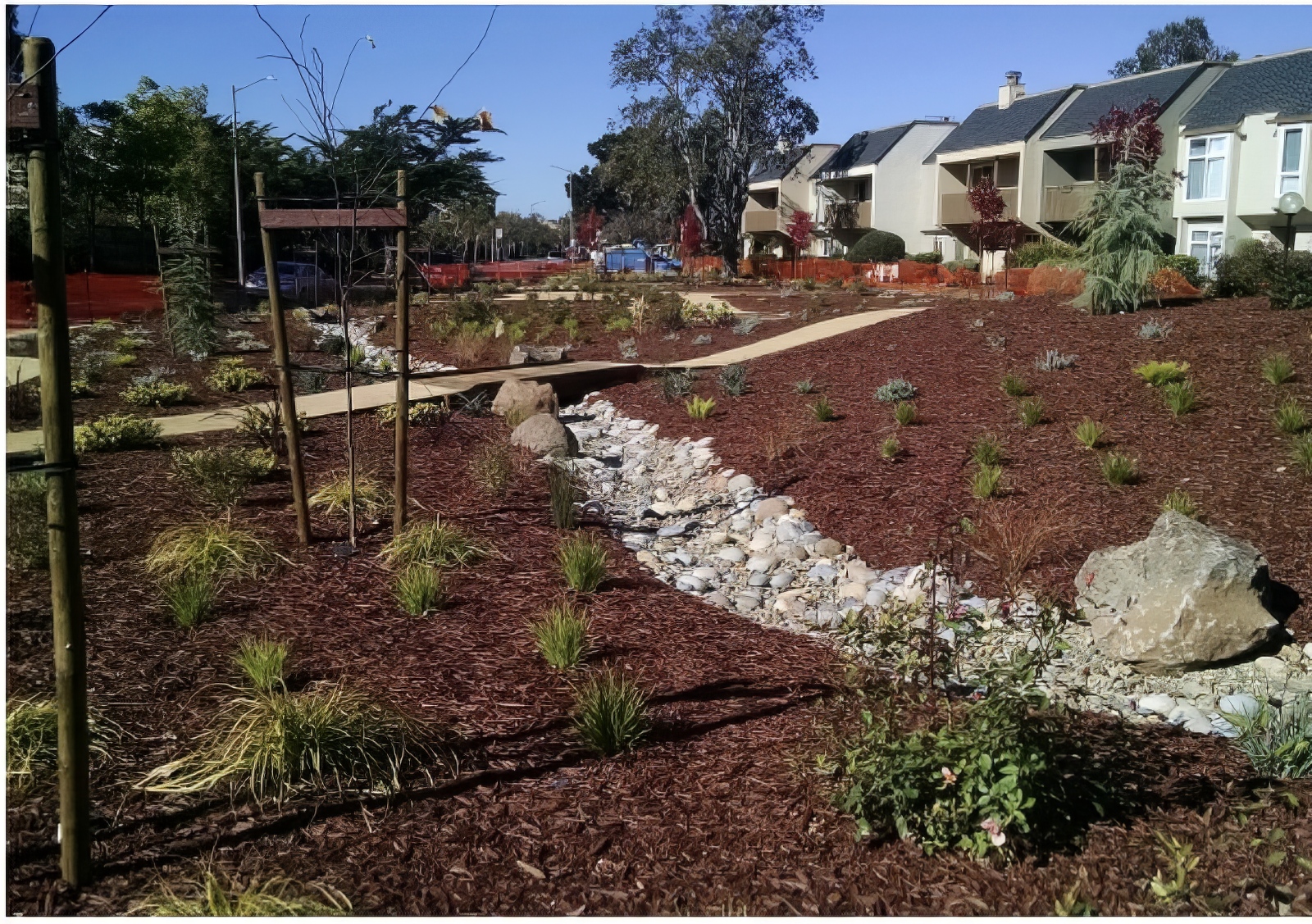Water Conservation Has Taken Center Stage
Water conservation has taken center stage in property management, especially in regions like California, where escalating water costs and drought conditions have pushed legislation to limit wasteful use. Assembly Bill 1572 (AB 1572), introduced in California, is drastically changing the way commercial and residential properties can use water for landscaping. For property managers and owners, the solution is clear—turf conversion.
Turf conversion ensures compliance with water regulations and offers financial savings, aesthetic value, and environmental benefits. This article explores the key components of turf conversion, why it’s critical, and how it benefits your property.
What is Turf Conversion?
Turf conversion involves the replacement of water-thirsty grass with low-water-use landscaping alternatives such as drought-tolerant plants, drip irrigation systems, and decorative gravel or mulch. The goal is to reduce water usage while maintaining the aesthetic appeal of your property.
Why remove turf?
Turfgrass, especially non-functional turf (such as grass in medians, decorative areas, or unused lawns), consumes a significant portion of urban water, making it unsustainable for regions with water scarcity. Removing turf offers several advantages:

How Turf Conversion Works
Step 1: Assessment and Planning
The first step is to evaluate your property’s existing turf areas. Identify non-functional turf that serves no recreational or practical purpose. Collaborate with landscaping professionals to design a plan for replacement that incorporates drought-tolerant plants, efficient irrigation systems, and sustainable materials.
Step 2: Access Available Rebates
Many local water agencies and state programs offer incentives to help offset the cost of turf replacement. These rebates vary by location and municipality. These rebates can cover a significant portion of the project costs and sustainable materials.
Step 3: Choose the Right Alternatives
When replacing turf, focus on landscape components that require minimal water and maintenance.
Step 4: Installation and Optimization
Install drought-tolerant landscaping and ensure your irrigation system is efficient. Smart irrigation technology, such as weather-based systems, can further reduce water usage by automatically adjusting watering schedules based on real-time conditions.
Why Turf Conversions Benefit Your Property
When to Consider When Converting Your Turf
Turf conversion is particularly valuable in the following scenarios:

The Future of Landscaping
Water conservation isn’t just a regulatory trend—it’s a necessity. Turf conversions make it possible for property managers to adopt sustainable landscaping practices that benefit both the environment and their bottom line.
To remain competitive and compliant in today’s property management landscape, taking steps to modernize your outdoor spaces is essential. Turf conversion is more than a solution—it’s an opportunity to innovate and lead.
Microclimates and Legacy Systems
California properties are chock full of microclimates — areas with unique weather, sun, and soil conditions—that make irrigation more complex. Implementing smart irrigation systems allows for informed decision-making even in diverse environments.
Take the First Step Toward Compliance and Savings
Navigating water regulations may seem daunting, but you don’t have to do it alone. Our team specializes in turf conversions, offering end-to-end solutions from design and installation to rebate applications and compliance certification.
Contact us today for a consultation. We’ll help you build a water-efficient landscape that’s as beautiful as it is practical.

